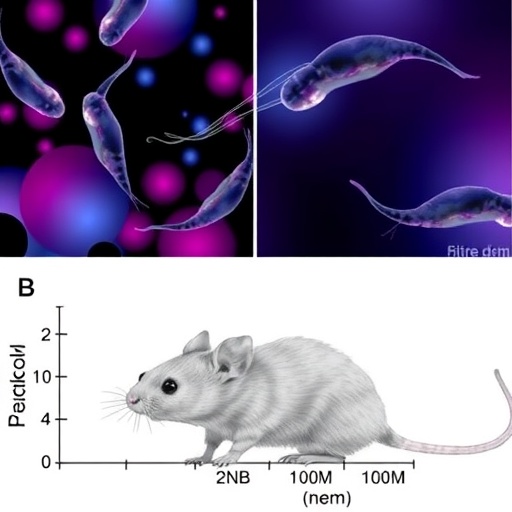Oncology Nurses’ Compliance with Standard Precautions: A Critical Examination
In the field of oncology, where the stakes are high and patient vulnerability is at its peak, the adherence to standard precautions by healthcare professionals is of paramount importance. An illuminating study by Tarakcioglu Celik and Ozdemir explores this vital aspect, shedding light on oncology nurses’ compliance with these precautions through a multi-method approach. The researchers meticulously investigated various factors influencing adherence, revealing insights that are critical not only for patient safety but also for the well-being of healthcare workers themselves.
Standard precautions are infection control measures that should be employed by all healthcare providers to prevent the transmission of pathogens. They encompass a range of practices, including hand hygiene, use of personal protective equipment (PPE), and safe disposal of medical waste. Despite their proven efficacy, studies have consistently highlighted gaps in compliance among healthcare professionals, specifically oncology nurses who frequently interact with immunocompromised patients. This raises a pressing concern: What are the barriers these professionals face, and how can we enhance compliance rates?
The study employs a mixed-methods approach, combining quantitative surveys and qualitative interviews with oncology nurses. This innovative methodology allows the researchers to capture a comprehensive view of compliance levels and the factors that underlie them. The results of the survey, which included responses from over 200 oncology nurses, provide a robust statistical foundation for understanding compliance rates across different healthcare settings. Surprisingly, while a significant portion of participants reported understanding the importance of standard precautions, only a minority adhered consistently to these practices during daily operations.
One of the key findings of the research is the role of education and training in promoting compliance with standard precautions. Many nurses expressed that while initial training had provided them with the necessary knowledge about infection control, ongoing education was lacking. The healthcare environment is constantly evolving, and so too are the strategies for effective infection control. Continuous professional development is critical; with regular updates and training sessions, nurses can stay informed about the latest best practices and guidelines, thus enhancing their compliance cultures.
Moreover, the study reveals organizational factors that significantly impact compliance. Nurses reported that institutional policies sometimes hindered their ability to implement standard precautions effectively. For instance, inadequate availability of PPE or unclear protocols can create confusion and, ultimately, non-compliance. The research underscores the importance of supportive infrastructure within healthcare organizations that not only provides resources but also fosters an environment where compliance is the norm rather than the exception.
Beyond organizational influences, individual factors such as stress and workload also play a crucial role in adherence to standard precautions. Oncology nursing is a demanding field, often characterized by high patient ratios and emotional strain. Many nurses expressed that the increasing pressure to deliver patient care could distract them from strict adherence to infection control measures. This finding prompts a broader discussion about the importance of mental well-being and manageable workloads in healthcare settings.
Furthermore, the qualitative interviews reveal that a culture of safety within healthcare teams significantly enhances compliance levels. When nurses feel supported by their colleagues and supervisors, they are more likely to adhere to standard precautions. An environment that encourages open communication and team collaboration creates a dynamic where compliance becomes a collective responsibility. The researchers emphasize the importance of fostering such cultures to improve not only patient outcomes but also staff morale.
In exploring the nurse-patient dynamic, the study highlights the importance of effective communication about infection control measures. Patients, particularly those undergoing oncology treatment, are often anxious and concerned about their safety. When nurses take the time to explain the rationale behind standard precautions, it not only reinforces compliance but also builds trust and rapport with patients. This two-way communication serves to empower patients, reassuring them that their safety is the priority of the healthcare team.
Ultimately, the researchers conclude that a multi-faceted approach is necessary to improve compliance among oncology nurses. This includes enhanced training initiatives, supportive organizational policies, and a focus on building a collaborative healthcare culture. By addressing both systemic and individual barriers, healthcare institutions can foster an environment where standard precautions are not just policies to follow, but integral components of daily nursing practice.
As healthcare continues to evolve, the insights gleaned from this study are particularly relevant in light of ongoing challenges posed by infectious diseases. The importance of rigorous adherence to infection control measures cannot be overstated, especially in oncology departments where the patient population is inherently more vulnerable. These findings serve as a call to action for healthcare leaders to prioritize compliance strategies, ensuring that nurses are both equipped and empowered to perform their duties safely.
In conclusion, the study conducted by Tarakcioglu Celik and Ozdemir is a significant contribution to our understanding of infection control practices in oncology nursing. It serves not only to shed light on current compliance levels but also to propose actionable strategies for improvement. As we advance in the quest for excellence in patient care, insights like these help pave the way for stronger, more resilient healthcare systems.
Subject of Research: Oncology nurses’ compliance with standard precautions.
Article Title: Oncology nurses’ compliance with standard precautions: a multi-method study.
Article References:
Tarakcioglu Celik, G.H., Ozdemir, E. Oncology nurses’ compliance with standard precautions: a multi-method study. BMC Nurs 24, 1125 (2025). https://doi.org/10.1186/s12912-025-03788-1
Image Credits: AI Generated
DOI: 10.1186/s12912-025-03788-1
Keywords: oncology, nurses, standard precautions, infection control, compliance, healthcare, barriers, safety culture.
Tags: adherence to standard precautionsbarriers to healthcare compliancecritical examination of nursing practicesenhancing compliance rates in healthcare.healthcare workers well-beingimmunocompromised patient careinfection control measures in healthcaremixed-methods research in nursingOncology nurses safety protocolsoncology nursing compliance challengespatient safety in oncologypersonal protective equipment in oncology





